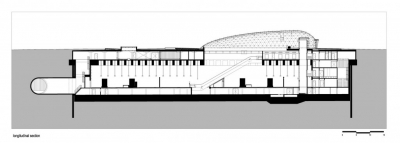Line M4 Underground Stations
Underground line M4 in Budapest has been the largest infrastructure project of the city for the last decades. The architects aimed to provide attractiveness for public transportation through the quality of the design of a series of new public spaces in Budapest. The new line with its ten stations can be regarded as a building of ten wings, where each wing has its own atmosphere, while they clearly belong together. Namely, following a national competition in 2004, PALATIUM Studio built up a network of architect offices to cooperate with large engineering companies. The Studio had a primary role in defining the architectural tasks and the design background; however, the architects worked out a common architectural language together. Thus, similar gestures of handling spaces, functions and materials inform the world of the stations, and at the same time, each station became unique, based on the artistic intentions of the designer. The ten stations of the new line are the results of architectural experiments with space, structure and light. During the design process architects made a strong effort to find optimal solutions among the requirements of construction technologies, transport technologies and the creature of artistic architectural spaces. Predicted by the cut and cover construction technology for the stations, the underground boxes of the stations bordered by diaphragm walls provided enormous spaces, in which only the structural elements, the large horizontal supports are visible with their rough, characteristic shape. Fair-faced concrete is used widely for the primary structures, while the elements close to travellers are in a finer human scale.
To use the possibilities of the large open spaces to an extreme, there are openings for the natural light from the surface, ensuring that stations enjoy an atmosphere of free, airy spaces. It is not only natural light that can specially define architectural spaces, but artificial lighting of the station areas has also a series of innovative and specific solutions. A high level and a high temperature of general illumination provides clear and clean feeling for the spaces, while the use of additional coloured lights result in special effects giving unique character for the stations. It is generally considered that the stations have added new public spaces for the city of Budapest with new aesthetics and high architectural quality of the large infrastructure. Meanwhile the project serves sustainable urban life: the recuperation system of the railway energy supply, the state of art lighting and ventilation system serves a smart use of energy. The ten stations of the project range between 6000-18000 square meters each.
Conceptual design: PALATIUM Stúdió Ltd. Zoltán ERÖ, Balázs CSAPÓ; 01-Kelenföldi vasútállomás, 02-Bikás park, 03-Újbuda-központ, 07-Kálvin tér Stations: PALATIUM Stúdió Ltd., VPI Építész Ltd. (01) - Zoltán ERÖ, Máté ANTAL, Dóra BRÜCKNER, Zsolt KOSZTOLÁNYI, Péter István VARGA; 04-Móricz Zsigmond körtér, 10-Keleti pályaudvar Stations: Gelesz és Lenzsér Ltd. - András GELESZ; 05-Szent Gellért tér, 06-Fövám tér Stations: sporaarchitects Ltd. - Tibor DÉKÁNY, Ádám HATVANI, Sándor FINTA, Orsolya VADÁSZ; 08-Rákóczi tér Station: Budapesti Mühely Ltd. - Tamás DÉVÉNYI; 09-II. János Pál pápa tér Station: Puhl és Dajka Építész Iroda Ltd. - Péter DAJKA

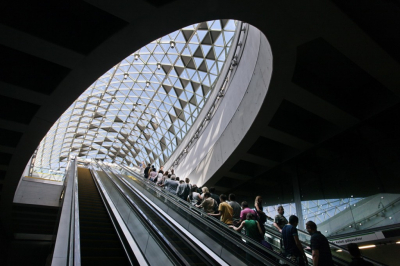
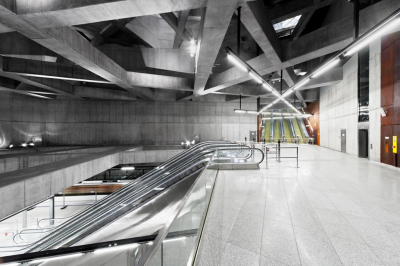

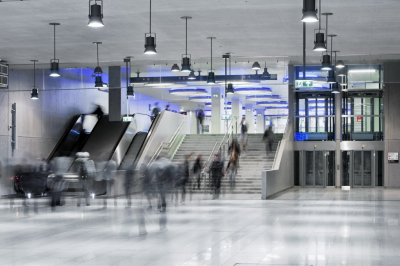
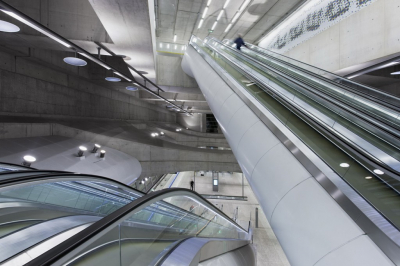
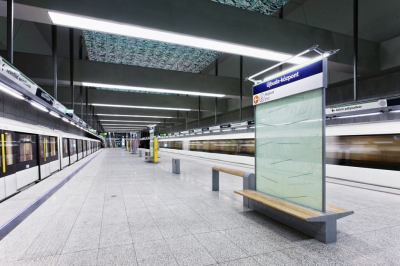 © Tam?s Bujnovszky
© Tam?s Bujnovszky
